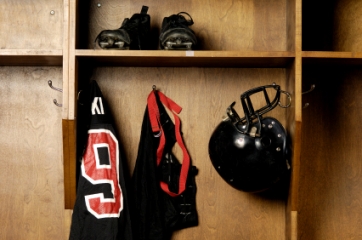If the sex abuse conviction of former Penn State assistant football coach Jerry Sandusky and the recent allegations of sexual abuse lodged against former House Speaker Dennis J. Hastert when he was a high school wrestling coach mean anything, it is to tell us not to assume that organized sports are an oasis where the safety and well-being of children is assured.
The largely unregulated world of children's sport has typically been slow to address the issue of sexual abuse of youth athletes. While sexual abuse of girls in sports has received some attention, the issue of the abuse of boys in sports has largely not appeared on the radar screen of most youth sports organizations.

Sobering statistics
Statistics on child sexual abuse (CSA) are generally viewed as unreliable, primarily because so many cases go unreported. While recent studies suggest a gradual decline in the victimization of children in the United States, including sexual abuse, the authors of a 2006 journal article concluded that "by almost any standard, levels of child victimization, even after the declines, are still disturbingly high."
The statistics are sobering:
- A 1987 study of 153 non-incarcerated paedophiles reported that they each had sexually abused an average of 150 boys;
- According to Sheldon Kennedy, police estimated that Graham James, the former Canadian ice hockey coach convicted in 1997 for sexually abusing him, may have molested between 75 and 150 other boys while he was a coach, manager and scout.
- A 2002 Australian study of athletes at the club and elite level reported that 31% of female and 21% of male athletes had been sexually abused at some time in their lives. Of these, 41% of females, and 29% of males reported sexual abuse within the sports environment. The authors concluded that the chances of an elite athlete being sexually abused were about fifty-fifty; for athletes at the club level, the chances were still one in four.
- While institutional abuse represents only 3% of CSA cases overall, over half of such cases occur in community settings, including sports-related contexts, and individual cases often involve large numbers of children. Of 91 convicted sex offenders interviewed for a 1995 study, more than half (53%) claimed to have recruited children and their families by offering "to play games with the children, or teach them a sport, or how to play a musical instrument."
- A 2000 study found that, where perpetrators were held in high-esteem by the local community, children faced additional difficulties in resisting and disclosing the abuse, a finding of particular significance to the sports context in which high-profile cases of sexual abuse have often involved coaches with enviable coaching records and who were generally held in high regard
- Anecdotal evidence suggests that youth sports organizations sometimes fail to act on disclosures of sexual abuse in order to protect their reputation or cover up for the lack of proper safeguards.








